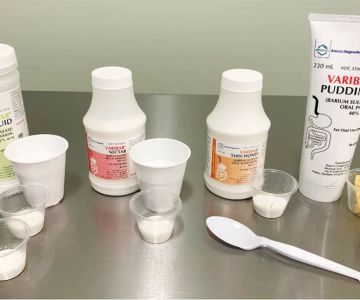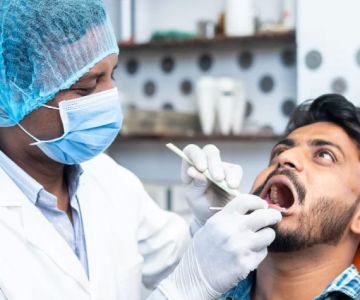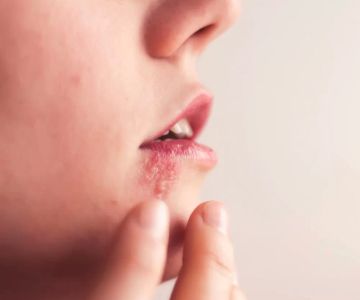How to Check Your Temperature Orally: Step-by-Step Guide
Measuring your body temperature orally is one of the most common and convenient methods to monitor your health, especially when you suspect a fever or illness. Understanding how to check your temperature orally accurately can help you detect fever early and take necessary action promptly.
1. Choosing the Right Thermometer for Oral Use
Before taking your temperature, it’s important to select an appropriate thermometer designed for oral use. Digital thermometers are widely preferred due to their ease of use and fast, reliable readings. Some older methods like mercury thermometers are still in use but are less recommended due to safety concerns.
Look for a digital oral thermometer that is waterproof and has a flexible tip for comfort. Many models include memory functions to track previous readings, which is useful when monitoring ongoing symptoms.
2. Preparing for an Accurate Oral Temperature Reading
To ensure accuracy, there are several preparation steps to follow before taking your temperature orally:
- Wait at least 15 minutes after eating, drinking hot or cold beverages, or smoking, as these can affect the reading.
- Make sure your mouth is closed and relaxed during the measurement.
- Clean the thermometer before and after use with rubbing alcohol or warm soapy water.
These precautions help avoid false readings caused by external factors.
3. How to Properly Take Your Temperature Orally
Follow these detailed steps for a precise oral temperature check:
- Turn on the digital thermometer and wait until it signals it’s ready.
- Place the thermometer tip under your tongue, slightly to one side toward the back of your mouth.
- Close your lips gently around the thermometer, keeping your mouth closed without biting down.
- Hold the thermometer in place for about 30 seconds or until it beeps to indicate the reading is complete.
- Remove the thermometer and read the display carefully.
If the reading seems unusually high or low, wait a few minutes and repeat the process to confirm.
4. Understanding Oral Temperature Readings
Normal oral body temperature typically ranges between 97.6°F (36.4°C) and 99.6°F (37.5°C). Temperatures above 100.4°F (38°C) generally indicate a fever. Keep in mind that oral temperatures can vary slightly based on time of day, activity level, and individual differences.
For example, temperatures tend to be lower in the morning and higher in the late afternoon or evening. If you or your family member shows consistent readings above the fever threshold, it’s advisable to consult a healthcare professional.
5. Common Mistakes to Avoid When Taking Oral Temperature
Even a simple task like measuring your temperature orally can have pitfalls. Here are common mistakes to watch out for:
- Taking the temperature immediately after drinking hot or cold liquids, which can skew the results.
- Not placing the thermometer far enough under the tongue.
- Talking, breathing through the mouth, or moving while measuring, which can interfere with accuracy.
- Using a thermometer not designed for oral use.
Avoiding these errors will improve the reliability of your temperature readings.
6. Real-Life Story: How Oral Temperature Measurement Helped Detect a Serious Illness
Jessica, a mother of two from Ohio, shared how oral temperature checks alerted her to a health emergency. One evening, she noticed her son was unusually quiet and slightly flushed. She quickly grabbed their digital oral thermometer and took his temperature.
The reading was 102.2°F, indicating a fever. Because she acted promptly, she contacted their pediatrician and took her son to the clinic. It turned out he had a developing infection that required early treatment. Jessica credits accurate oral temperature measurement for helping her detect the problem before it worsened.
This story illustrates how knowing how to check your temperature orally can be a simple but powerful tool in managing health at home.
7. Additional Tips for Managing Oral Temperature Monitoring
To make oral temperature checking easier and more effective, consider the following advice:
- Keep your thermometer clean and store it in a safe place to prevent damage.
- Use disposable probe covers if available, especially when sharing the thermometer with others.
- Track temperature readings in a notebook or app to observe trends over time.
- When monitoring children or elderly family members, perform regular checks to catch any fever early.
By integrating oral temperature measurement into your regular health routine, you enhance your ability to respond quickly to illness symptoms.
8. When to Seek Medical Help Based on Oral Temperature Readings
While an oral thermometer is an excellent home tool, certain temperature readings or symptoms require prompt medical attention:
- Oral temperature above 103°F (39.4°C) sustained over several hours.
- Fever accompanied by severe headache, difficulty breathing, persistent vomiting, or confusion.
- Infants under three months with a rectal temperature equivalent above 100.4°F (38°C).
- Fever lasting more than three days without improvement.
If you experience any of these signs, do not delay seeking professional medical advice.







 River City Orthodontics: Glen Allen5.0 (96 review)
River City Orthodontics: Glen Allen5.0 (96 review) Pediatric Dental Of Grafton5.0 (7 review)
Pediatric Dental Of Grafton5.0 (7 review) Dr. Keith Brown DDS, FAGD | Naperville Family & Emergency Dentist4.0 (71 review)
Dr. Keith Brown DDS, FAGD | Naperville Family & Emergency Dentist4.0 (71 review) Dr. Beth A. O'Connor, DDS4.0 (96 review)
Dr. Beth A. O'Connor, DDS4.0 (96 review) Ann Marie Redmond0.0 (0 review)
Ann Marie Redmond0.0 (0 review) Joel B Schilling, DDS5.0 (2 review)
Joel B Schilling, DDS5.0 (2 review) The Importance of Oral Health Education During Pregnancy for a Healthy Pregnancy
The Importance of Oral Health Education During Pregnancy for a Healthy Pregnancy Best Tips for Brushing Your Teeth Properly for Healthy Gums: Essential Techniques for Oral Health
Best Tips for Brushing Your Teeth Properly for Healthy Gums: Essential Techniques for Oral Health Why Skipping Dental Checkups Can Lead to Bigger Oral Health Problems
Why Skipping Dental Checkups Can Lead to Bigger Oral Health Problems Advantages of Porcelain Dental Restorations
Advantages of Porcelain Dental Restorations How Can Diabetes Cause Tooth and Gum Problems? Preventing and Managing Oral Health Issues
How Can Diabetes Cause Tooth and Gum Problems? Preventing and Managing Oral Health Issues Healthy Habits for Promoting Good Oral Health and Hygiene: Tips for a Healthy Smile
Healthy Habits for Promoting Good Oral Health and Hygiene: Tips for a Healthy Smile